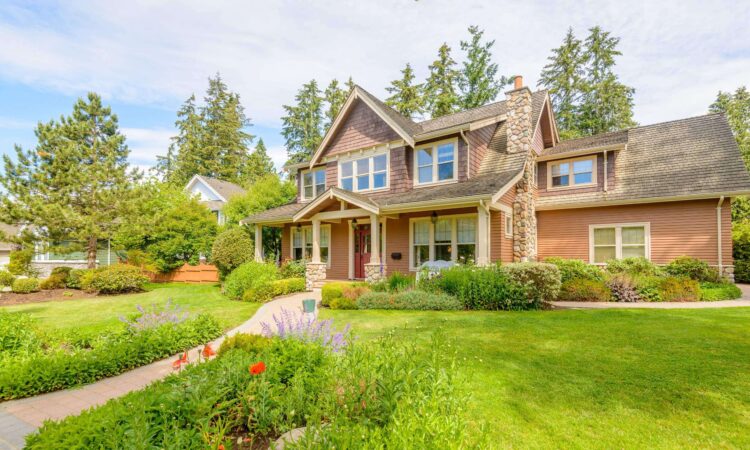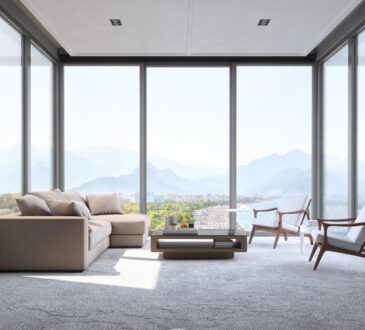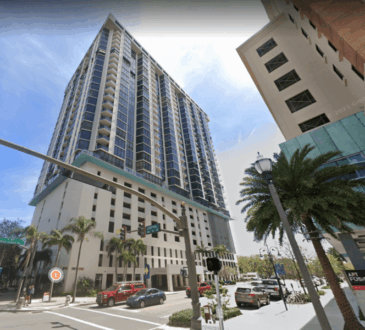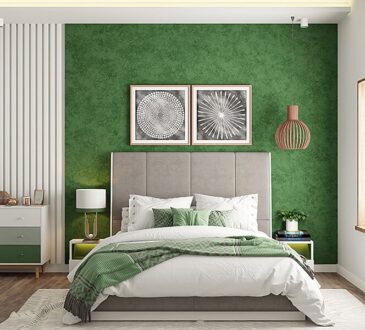
Key Takeaways:
- The custom home building industry is evolving with a focus on sustainable design and smart technology.
- Homebuyers are increasingly opting for smaller, efficient living spaces that prioritize quality and multifunctional areas.
- Customization is about personalizing homes to reflect individual lifestyles and values, enhancing emotional connection to the space.
- Seek builders who balance experience with innovation, employing modern practices while maintaining high standards.
- Client testimonials are vital for assessing a builder’s reliability, work ethic, and responsiveness to client needs.
- Initial consultations are crucial for establishing a clear vision and fostering rapport between homeowners and builders.
- Designing a home combines aesthetics and functionality, ensuring that spaces are both visually appealing and practical.
- Budgeting for a custom home includes all associated costs, with a contingency fund recommended for unexpected expenses.
- Investing in quality materials and skilled craftsmanship enhances long-term value and reduces future maintenance needs.
- A successful custom home building process involves understanding market nuances, key builder qualities, and effective collaboration.
Understanding the Custom Home Building Landscape
The Evolution of Custom Homes: Trends to Watch
The landscape of custom home building has undergone a significant transformation in recent years, shaped by shifts in consumer preferences, advancements in technology, and changing environmental considerations. One major trend is the growing demand for sustainable design practices. Homebuyers today are increasingly concerned with their environmental footprint, prompting builders to incorporate energy-efficient features, such as solar panels, high-performance insulation, and water conservation systems. Additionally, the rise of smart home technology, which integrates systems such as lighting, security, and heating into one centralized interface, is creating homes that are not only visually appealing but also incredibly functional.
Another fascinating trend is the movement toward smaller, more efficient living spaces. Homebuyers are recognizing the benefits of “downsizing,” focusing on quality over quantity, and opting for homes that prioritize open floor plans and versatile spaces. This trend is often accompanied by requests for integrated outdoor living areas that seamlessly blend the indoor and outdoor environments, further enriching the homeowner’s experience and making the most of the available land.
Cultural influences also play a role in the evolution of custom homes. As people become more globally connected, architectural styles are merging and evolving. Modern designs that incorporate elements from various cultures, such as minimalist aesthetics, organic materials, and sustainable practices are becoming increasingly popular. This blending allows homeowners to create unique spaces that reflect their personal journeys and values, leading to an enriched home-buying experience.
Why Customization Matters: Personalization Beyond the Blueprint
Customization is at the heart of the custom home building process, transcending mere aesthetics and delving deep into the realms of identity and comfort. When a homeowner chooses to build a custom home, they are not just selecting materials or layouts; they are creating a tangible manifestation of their lifestyle, aspirations, and personal aesthetic. The power of customization lies in its ability to transform a standard blueprint into a unique narrative tailored to meet individual needs.
This personalization process begins with understanding everyday routines and the specific requirements of each family member. For example, a home designed for a growing family may prioritize open spaces and communal areas, while a home for an artist might include dedicated studio space infused with natural light. These considerations illustrate how a custom home can enhance daily living and foster connections among family members.
Moreover, customization extends to choosing materials that resonate with the homeowner’s values. Many individuals today are focused on the ethical implications of their purchasing decisions; thus, selecting eco-friendly materials and locally sourced craftsmanship becomes not just a design choice but also a statement of values. This alignment of personal ethics with home design results in a deeper emotional connection to the space, fostering a robust sense of belonging.
Key Qualities to Look for in Your Builder
Experience vs. Innovation: Striking the Right Balance
When searching for a custom acreage home builder, one of the most essential aspects to consider is the balance between experience and innovation. An experienced builder brings a wealth of knowledge and practical skills honed over years of practice, ensuring projects are completed efficiently and to high standards. They have typically navigated various challenges in the building process, from zoning laws and permits to unexpected site conditions, and possess invaluable insights into what works and what doesn’t across different builds.
However, while experience is fundamental, innovation cannot be overlooked. The best builders combine their extensive knowledge with a forward-thinking approach. They stay up to date with the latest trends, materials, and technologies, allowing them to offer creative solutions and designs that cater to modern lifestyles. This might mean experimenting with new building techniques, using sustainable materials, or incorporating smart technology into homes to bolster functionality.
In this rapidly evolving industry, builders who can merge these two facets often produce the most remarkable results. Homeowners should seek builders who can demonstrate both a solid track record of successful projects and a catalog of innovative practices. This way, clients can benefit from tried-and-true methods while also taking advantage of the cutting-edge designs available today.
Client Testimonials: Peering Through the Window of Trust
Client testimonials provide a crucial window into the reliability and capabilities of a custom home builder. These real-life accounts yield insights into the builder’s work ethic, communication skills, adherence to deadlines, and overall quality of the finished product. Engaging with previous clients can illuminate the builder’s strengths and weaknesses, helping potential homeowners gauge the level of satisfaction they can expect.
Moreover, client testimonials often reveal the builder’s ability to foster a collaborative environment. A builder who openly encourages feedback and makes adjustments to meet client needs demonstrates a commitment to client satisfaction. Reviews discussing how builders have listened and adapted to new ideas can serve as indicators of a positive partnership, a key element in the customized home-building process.
It’s also recommended to explore online reviews and obtain references before making a decision. Home builders with a robust online presence typically leave a trail of past projects and client experiences that can be easily accessed. When a builder boasts a plethora of positive reviews, especially from reputable sources, it serves as a reassuring sign of their capabilities and commitment to excellence.
The Process of Collaboration: Building Your Vision Together
Initial Consultations: Painting the Picture of Your Dream Home
The journey to your custom home begins long before the first shovel hits the ground; it starts with initial consultations. These meetings are crucial as they set the tone for the entire building process. During this phase, it’s vital for homeowners to articulate their vision clearly, covering elements such as desired styles, preferred layouts, and functional requirements to a willing and attentive builder.
In these consultations, an effective builder will guide you through a series of thought-provoking questions designed to uncover your deeper motivations and lifestyle needs. This could include considerations like how your family interacts with each other and the spaces you envision for private versus communal experiences. Active listening and open communication from the builder ensures that the design concept reflects your priorities, transforming vague wishes into coherent plans that the builder can translate into architecture.
Additionally, these sessions are an opportunity to establish rapport and trust, further solidifying the partnership between the homeowner and the builder. It’s encouraged to approach these meetings with an open mind; the building process could reveal ideas or solutions that you may not have considered initially, enhancing your home design in ways you hadn’t foreseen.
Designing with Intent: Merging Aesthetics and Functionality
Designing a home is a fascinating interplay of aesthetics and functionality, as each reinforces the other to foster an inviting and efficient living environment. The best custom home builders understand that beauty must serve purpose; thus, they approach design with a mindset emphasizing both form and function.
This approach begins with an understanding of how each space will be utilized. For example, envisioning a family room that is both a cozy retreat for reading and a hub for family gatherings requires careful planning. The builder’s role is to ensure the room can accommodate various activities seamlessly while also being visually appealing. Strategic placement of windows for natural light, open layouts to facilitate flow, and thoughtful incorporation of built-ins for organization are just some ways to achieve this balance.
Moreover, a key consideration involves integrating outdoor spaces with indoor living environments—or what many refer to as “indoor-outdoor living.” This design philosophy takes advantage of views and natural light while extending livable areas outside. Features such as sliding glass doors that open onto patios or porches can create a seamless transition between inside and outside, enhancing the homeowner’s lifestyle with the beauty of nature.
Overall, effective collaboration between client and builder during the design phase allows for the emergence of spaces that resonate on both aesthetic and functional levels, ultimately creating a home that feels joyful, comfortable, and perfectly suited to the inhabitants.
Budgeting for Your Fantasy: Understanding Costs and Value
Navigating the Financial Waters: What to Expect
Budgeting for a custom home is oftentimes viewed as one of the most daunting aspects of the entire building process. However, having a clear understanding of what to expect can alleviate much of the anxiety associated with financial planning. Initially, it’s crucial to establish a total budget that is reflective of your financial capabilities and requirements. This figure should include not only construction costs but also expenses related to permits, site preparation, interior furnishings, and landscaping.
To effectively navigate this financial landscape, homeowners should familiarize themselves with common cost categories in custom building. For instance, land acquisition, construction materials, and labor costs typically consume the bulk of the budget. Additionally, customizing features, from cabinetry to flooring, can lead to significant variances in expenses. Being transparent with your builder about budget constraints during the consultation period can enable them to assist you in making informed decisions that maximize your resources.
Beyond just calculating costs, it’s advantageous to include a contingency allowance—usually around 10-15% of your total budget—in case of unexpected expenses. Building is rarely a straight path, and being prepared can safeguard against any financial turmoil that might arise.
Investing Wisely: The True Value of Quality Materials and Craftsmanship
When it comes to building a custom home, cutting corners to save costs can often lead to regret down the line. Investing in quality materials and craftsmanship can significantly enhance the durability and aesthetic appeal of your home, providing lasting value. The materials selected for your home will not only impact its initial appearance but will also determine long-term maintenance needs and energy efficiency.
For instance, investing in high-performance windows can improve insulation and reduce energy bills over time, while quality roofing materials can help extend the life of your home and minimize repairs. Therefore, rather than seeking the cheapest options available, it’s wise to consider value and longevity. This investment mindset fosters a vision of your home as an asset that appreciates over time rather than a depreciating expenditure.
Moreover, the skill of the craftsmanship and the reputation of the builders cannot be understated. Quality workmanship translates to fewer future repairs and an overall better living experience. High-caliber builders often have established relationships with reputable suppliers, ensuring that only the best materials are used for construction.
In conclusion, while the journey to building your dream custom home can be intricate and complex, understanding the nuances of the market, key builder qualities, collaborative processes, and budgeting effectively can empower you to make informed decisions. Embrace the journey, trust the collaboration, and prepare for the stunning realization of your dream—a beautiful, personalized space that you can proudly call home.
FAQ
Question: How long does the custom home building process typically take? – The duration of the custom home building process can vary widely depending on factors such as design complexity, regulatory approvals, and seasonal weather conditions. On average, it can take anywhere from 6 months to over a year to complete a custom home.
Question: What should I include in my initial budget for a custom home? – Your initial budget should encompass construction costs, permits, site preparation, landscaping, interior furnishings, and a contingency fund for unexpected expenses. Understanding these categories will help you to plan more effectively.
Question: Can I use my own plans when working with a custom builder? – Yes, many custom builders are open to utilizing homeowner-provided plans. However, it’s essential to discuss the feasibility and any necessary adjustments to ensure the plans meet local building codes and structural requirements.
Question: How do I choose the right builder for my custom home? – Look for builders who demonstrate a strong portfolio, positive client testimonials, and a balance of experience and innovation. A thorough vetting process should also include interviews, visits to completed projects, and discussions about their building practices.
Question: What role do local building codes play in the custom home building process? – Local building codes dictate safety standards, zoning regulations, and construction practices. A reputable builder should be familiar with these codes and ensure that all aspects of your custom home comply with them throughout the building process.
Question: Are energy-efficient homes more expensive to build? – While the initial costs for energy-efficient features can be higher, they often lead to significant savings in energy bills over time. Investing in energy-efficient materials and systems can be financially beneficial in the long run.
Question: What types of warranties should I expect from my builder? – Most reputable builders offer warranties that cover craftsmanship and materials, typically ranging from 1-10 years. It’s advisable to review the warranty details to understand what is covered and for how long.
Question: How important is communication between the homeowner and builder? – Effective communication is crucial in the custom home building process. It ensures that both parties are aligned on goals, expectations, and modifications throughout the project, leading to a more successful outcome.
Useful Resources
- National Association of Home Builders
- Green Building Advisor
- U.S. Department of Energy
- BuildingGreen
- Health and Sustainability in the Home Environment
- HGTV
- ArchDaily
- American Public Health Association




